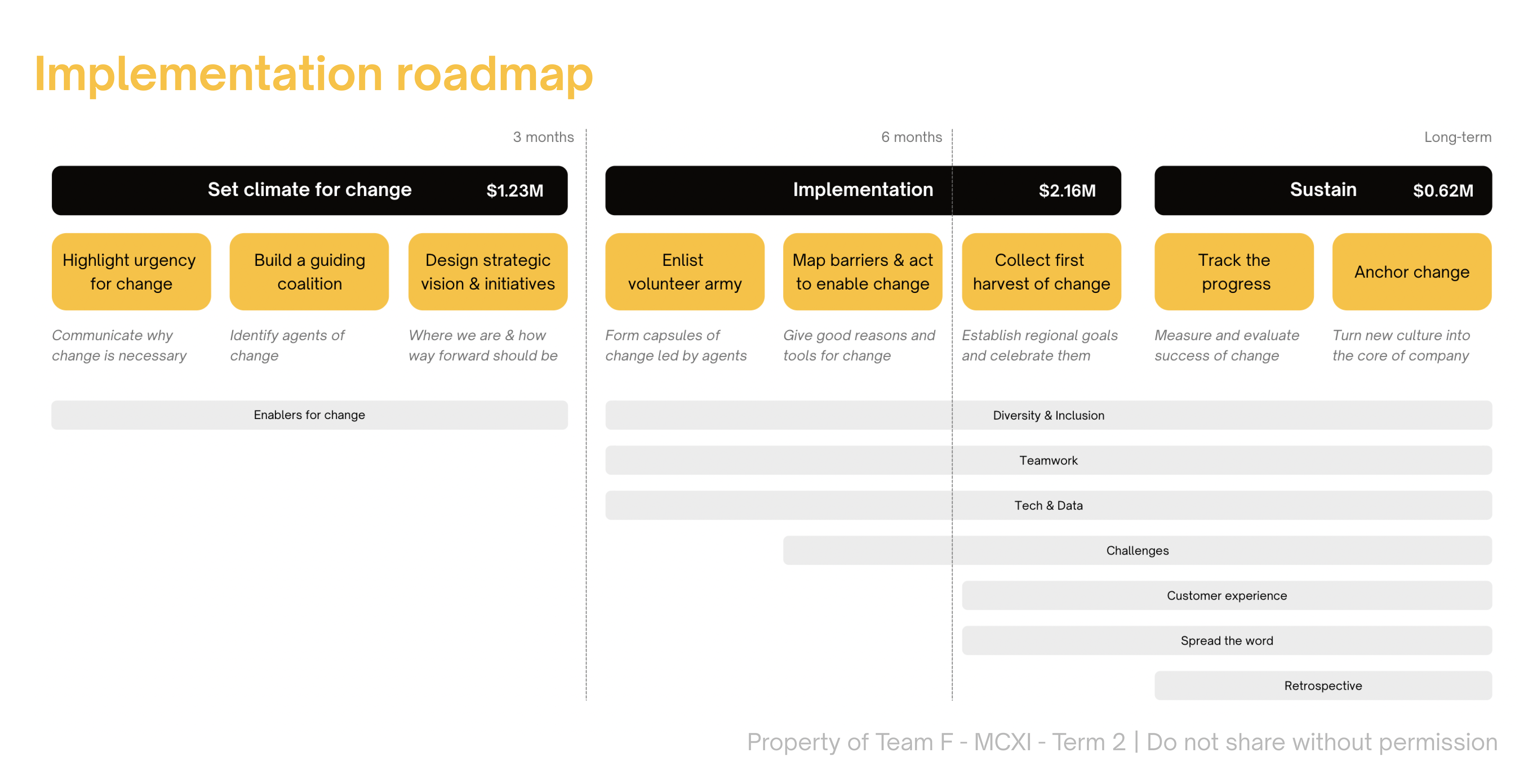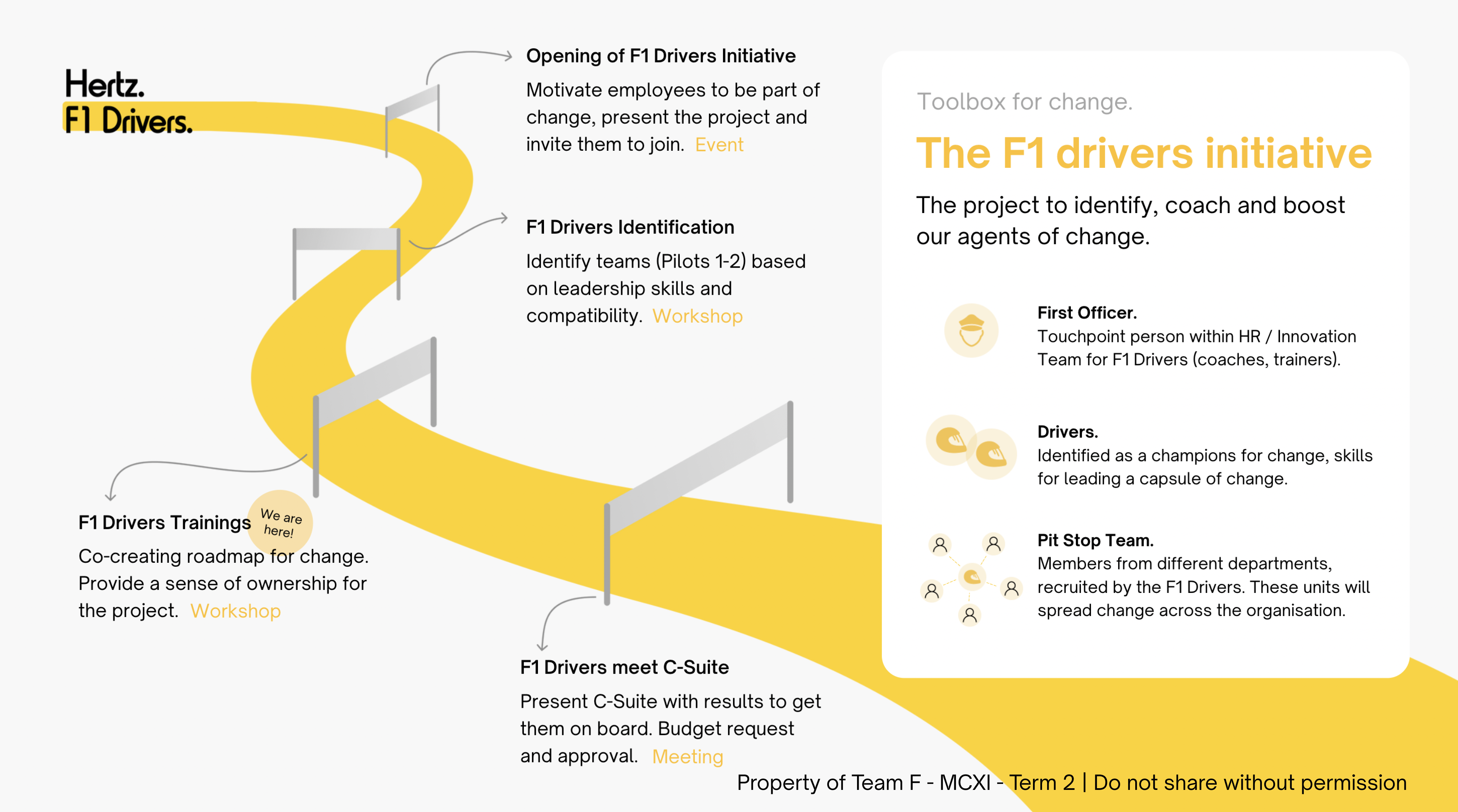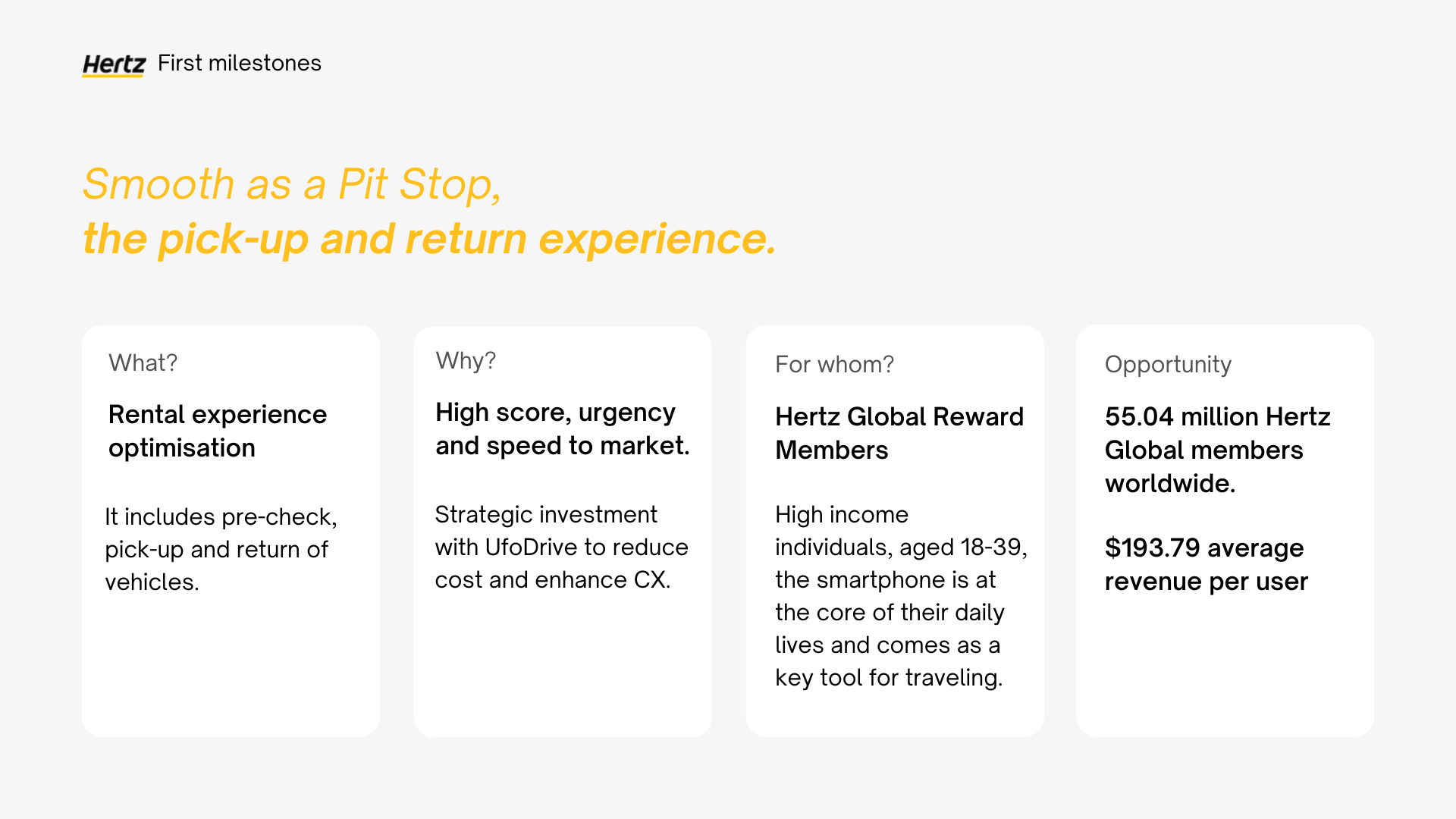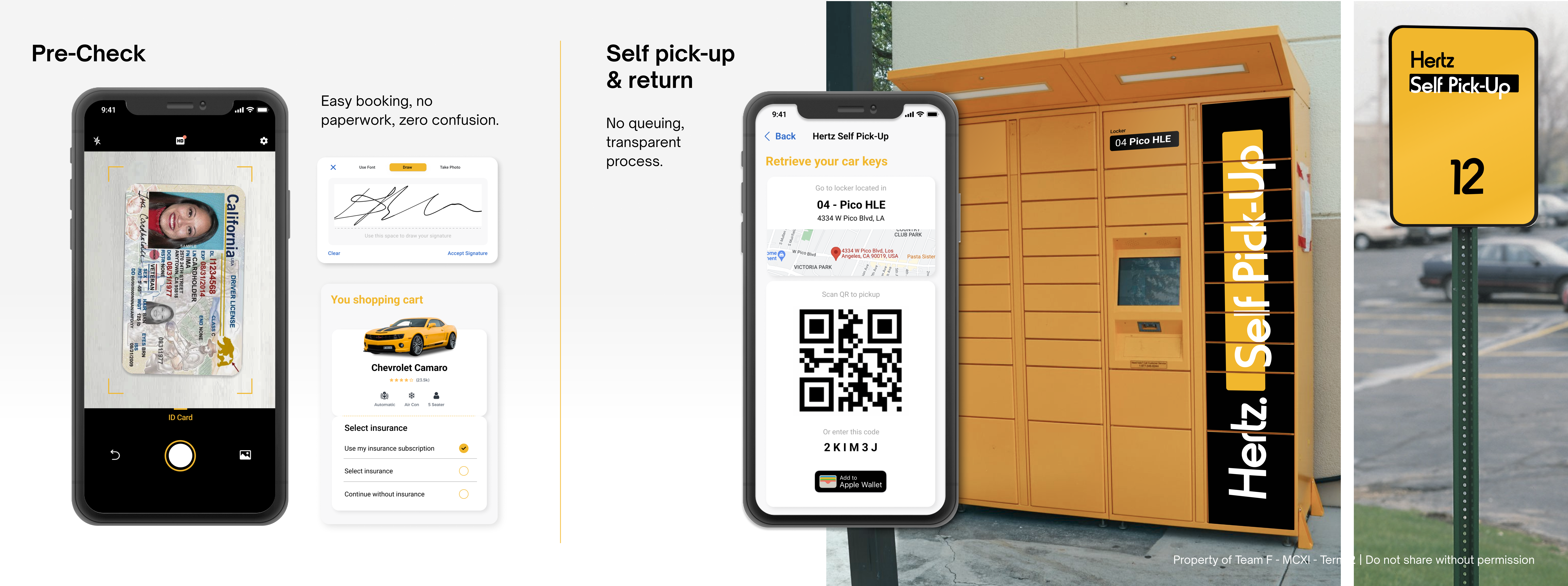Driving Innovation: The Hertz Corporation case.
For the final project of the Corporate Innovation and Culture Change course of the Master in Customer Experience and Innovation at IE Business School, a team of students envisioned a two-sided innovation strategy: a culture transformation and an innovation portfolio for The Hertz Corporation.



By leveraging the company’s long-term growth potential that resulted from the pivotal structural changes made after facing bankruptcy, this strategy aims to help Hertz regain their industry position and to design a way forward where they become the leaders of change within the mobility arena.
Client
Hertz
Release Date
March 2021
Role
Organisational Developer
Hertz, on the move. A Culture Transformation.

The Current State
The first step to drive change in the culture was to understand where Hertz is currently is standing. The analysis was done in on 3 different levels:
- Reviewing Hertz culture statements
- Scanning employee’s feedback (ie. Indeed)
- Assessing external evaluations (ie. Culture 500)

The diagnosis shows the main areas where Hertz is lagging behind, are the same areas that the company claims to have at the very heart of their culture.

The New Hertz
Based on the research, we listed all Hertz competitive advantages as well as the needed environment for enabling change and for the company to be well prepared for the future.
Our biggest challenge was to envision values and behaviours keeping in mind how and when we were going to make them happen, who should be the primary target, and how we were going to measure their impact.
A two-sided mindset

Our main idea was to build a culture that finds synergies in opposing forces, a culture that allows each individual to thrive while working collectively to achieve Hertz’s common goals.

Many believe that you cannot be global without losing local advantages and local expertise, but we believe Hertz can. Others say that efficiency is lost as you become more versatile, but we challenge them to see Hertz doing both. Overall, Hertz understands the value of their community and knows that both their customers and their employees are equally important.

To materialise this change, we came up with 30 initiatives for employees to develop or enhance hard and soft skills, and team dynamics. They are grouped in 8 different areas that compose the new Toolbox for Change, and will boost the corporation’s new values and behaviours.

Evaluating how all initiatives will contribute to each value and help build the new culture, this Toolbox (& set of initiatives) could be implemented in 3 phases:
- The first phase is focused on mobilising assets and recruiting the right people to enable change.
- The second phase, which represents the biggest part of the Culture Transformation, aims to create new habits and ways of behaving in the company.
- The third phase aims to monitor progress and efficiency of change, while also sustaining the new culture on the long-run.

Finally, this culture change will impact Hertz on 3 different levels: individuals, teams, and the organisation as a whole, with specific metrics to evaluate their success.

Driving Cultural Change
One of the many projects within the Toolbox for Change is the F1 Drivers Initiative. Encompassing different activities, it aims to build the foundations for change starting with getting the key people on board. It identifies change agents that will recruit their own capsules of change to later on spread the new culture throughout the company.

Success is Inside-Out & Outside-In
“The future starts today, and we need to build it together.” This is the new Hertz transformation statement we have envisioned to leverage the internal culture transformation mindset into an innovative portfolio of opportunities.

For a company to drive innovation and potential for long-term growth, they need to foster successful change. But that does not only involve investing in the next market disruptive technology, product or service. It entails altering the organization’s DNA, changing the collective mindset to embrace and prepare for change: it is a process that goes from the inside-out and the outside-in.
Hertz, Moving Forward. The New Portfolio
Preparing for the future means understanding how the world and our industry will look like in some years.
Foresight as a tool for innovation
We’ve mapped out the drivers of change and main trends that will guide us when building a potential picture of what is coming, in order to anticipate and prepare for that future.

Identifying Hertz drivers and trends allowed us to create potential future scenarios, and to develop the main 5 challenges for Hertz, which involve customers and society changes, government policies, climate change, and technology evolution — all within the mobility industry.

These innovation challenges were our guidelines to start brainstorming projects that will ultimately compose the new Hertz Innovation Portfolio.
The Way for Innovation

We designed a visual style for this new portfolio initiative. In contrast to the Culture Transformation, shapes are more geometrical.
As a result of that brainstorming, the selected projects addressing the innovation challenges were classified in three levels, each level with a different purpose:
- Core projects: Improving current services and creating innovation capacity with the main goal of consolidating healthy financials.
- Adjacent projects: Develop innovation abilities and diversify revenue streams.
- Transformational projects: Respond to the upcoming trends that will shape the future.

Overall, the portfolio has the goal of giving continuity to the optimisation efforts done during the last year, leveraging current assets and expertise to create new sources of growth through diversification and by starting to invest in the future that has not yet arrived.
“Smooth as a Pit Stop, the pick-up and return experience”: first Hertz’s portfolio milestone.
The priority of launching this initiative above the rest lies on its positive score in three different criteria: urgency, speed to market and economic impact on the business. Addressing core services, the project is both needed in the market and easy to implement, and has the potential to increase the company’s revenues.

Leveraging the current Hertz app, we will digitalise and fasten the bureaucratic part of the check in with a two step digital validation — ID and digital signature — and a new insurance subscription model to enhance transparency. Then, when the user selects the self pick up option, they will be provided with a code to retrieve the keys from lockers placed in parkings around the city, to finally pick up the car. The same dynamic takes place for the return. The lockers are the result of a partnership with Amazon lockers, which will save Hertz the initial investment costs, and will associate the brand with multi-industry key players such as Amazon.








